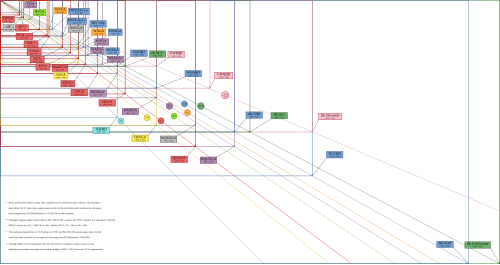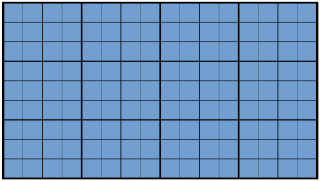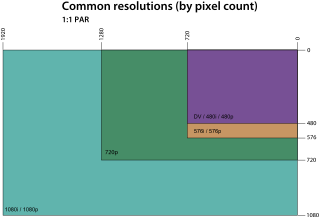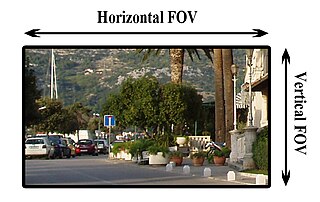| Decimal value | Aspect ratio | Format name | Resolutions | Lens & Film |
|---|
| 1.185 | 32:27 | DVCPRO HD | 640×540, 1280×1080 | 1x |
| 1.25 | 5:4 | DV PAL | 720×576, 1280×1024, 1500×1200 | 1x |
| 1.3 | 4:3 | Video Graphics Array | 320×240,640×480, 960×720, 1440×1080, 1600×1200 | SDTV |
| 1.5 | 3:2 | DV NTSC / laptops | 720×480, 1920×1280, 2160×1440, 2256×1504, 2400×1600, 3000×2000 | 1x |
| 1.6 | 8:5 | 16:10 widescreen (PC only) | 1280×800, 1440×900, 1680×1050, 1920×1200, 2560×1600, 2880×1800, 3072×1920, 3840×2400 | - |
| 1.6 | 5:3 | European Widescreen | 400×240, 800×480, 1280×768 | Super 16 mm |
| 1.7 | 16:9 | Widescreen | 1920×1080, 2560×1440, 3840×2160, 7680×4320 | Anamorphic 1.5x on 32:27, HDTV |
| 1.618 | 16:10 | 16:10 Tallboy | 640×400, 960×600, 1280×800, 1440×900, 1680×1050, 1920×1200, 2560×1600, 3840×2400 | - |
| 1.85 | 37:20 | "Flat" DCI | 1998×1080, 3996×2160 | 1x |
| 1.8962 | 256:135 | "Full" DCI | 2048×1080, 4096×2160 | 1x |
| 2.0 | 2:1 | VistaVision / Univisium | 2160×1080, 2400×1200, 2880×1440, 3200×1600, 3600×1800, 3840×1920, 4320×2160, 4800×2400, 5760×2880 | VR cameras (most) |
| 2.3468531 | 1678:715 [13] | Cinemascope (1950s–1970s) | analog | Anamorphic 2x on 35 mm with optical audio |
| 2.370 | 64:27 | "21:9" ultrawide | 2560×1080, 5120×2160, 7680×3240, 10240×4320 | Dashcam, Anamorphic 1.33x on 16:9, 1.25x on DCI 256:135, 2x on 32:27 |
| 2.386946 | 1024:429 | "Scope" DCI cinema format | 2048×858, 4096×1716, 8192×3432 | 1x |
| 2.38 | 43:18 | "21:9" ultrawide (PC only) | 3440×1440, 5160×2160, 6880×2880 | - |
| 2.4 | 12:5 | 24:10 ultrawide | 2880×1200, 3840×1600, 4320×1800, 5760×2400, 7680×3200 | - |
| 2.55 | 51:20 | Cinemascope 55 | analog | Anamorphic 2x on 35 mm without optical audio |
| 2.6 | 8:3 | Cinerama / 24:9 ultrawide (PC only) | 240×640, 2880×1080, 3840×1440, 5120×1920, 5760×2160, 7680×2880, 10240×3840 | - |
| 2.76 | 69:25 | Ultra Panavision | analog | Anamorphic 1.25x on 70 mm |
| 3.2 | 16:5 | 32:10 super wide (PC only) | 2880×900, 3840×1200, 5120×1600, 5760×1800, 7680×2400, 10240×3200 | - |
| 3.5 | 32:9 | 32:9 super wide (PC only) | 3840×1080, 5120×1440, 7680×2160, 10240×2880 | - |
| 3.6 | 18:5 | 36:10 super wide (ultra-widescreen 3.6) | 4320×1200, 5760×1600, 6480×1800, 8640×2400 | 1x |
| 4.0 | 4:1 | Polyvision | analog / 3 images 4:3 projected side by side | 3x |














